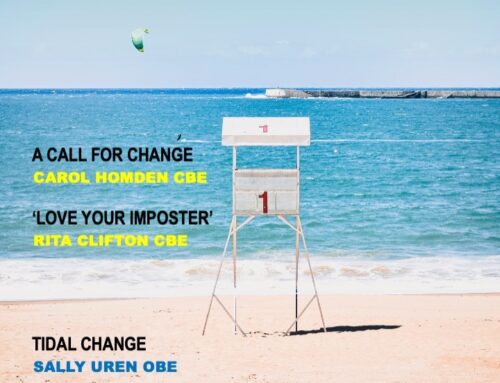How will tourism change?

I never expected a trip to the grocery store was going to be something I actually looked forward to during my months working-from-home. But then nothing seems to be “normal” these days as we work through the global pandemic. Every person, every industry, and every market has been profoundly impacted by Covid, none more so than travel and tourism.
It has been a very tough 15 months for tourism, and we probably haven’t seen or experienced the full impact yet. What I have started seeing are “green shoots” of tourism activity as we approach mid-2021, following an aggressive vaccination program around the globe allowing markets to slowly open. This is good news for the industry, but we’ll need to be cautious in celebrating any opening as this pandemic continues to take twists and turns that we had not anticipated.
For the purposes of this article, I would like to focus on leisure travel. Although I will touch on some expected trends in business travel, this article is predominantly about leisure travel and tourism. Travel trends can be divided into two areas: (1) travel trends accelerated by the pandemic; and (2) longer term travel trends, some accelerated by the pandemic and others we’re beginning to identify now.
Trends Accelerated by the Pandemic
What is absolutely clear is that there is a lot of pent-up demand for travel. Having been home-bound and heavily restricted in terms of movement for so long, there is an appetite and expectation that tourism is going to accelerate and fast. But it will be slightly different from what we would have expected pre-pandemic:
Travellers will be willing to spend more, as they have cancelled, postponed and saved for holidays never taken. They will be looking to satisfy more of their “bucket list” travel destinations venturing farther and to more exotic locales and finally will be looking at destinations that have “opened up” and are booking faster than ever before.
With the introduction of “vaccine passports” combined with fast, cheap, and easy covid tests (often in airports), we expect the above behaviours to only accelerate for the second half of 2021 and going into 2022. It is my expectation that vaccine passports will be the norm from later this year, restricting travel for anyone not able to show proof of vaccination.
There are other trends accelerating quickly as people look for safe destinations to visit.
Namely, camping is on the rise as it’s outdoors, self-provided accommodation, perceived safe, and easy to access from home. Big, wide open spaces are attractive for travellers concerned with the pandemic. The higher end “Glamping” is also on the rise as we look for more up-market experiences but still need to feel safe and secure away from crowds. Whilst of course, hotels and resorts are not only increasing their cleaning and disinfecting protocols, but they are actively marketing those initiatives to make guests feel safe.
Finally, restaurants, cafes, bars and other hospitality centres are also improving and increasing their disinfecting protocols, their contract tracing, socially distanced tables and chairs, plexiglass dividers, temperature checks before entering, and other actions designed to keep patrons safe and secure.
Surprisingly, we are starting to see multi-generational travel as connecting with family has become more and more important, especially with elderly family members. While this is not something new, it is something that is increasing as the pandemic restricted contact and engagement amongst family members. In fact 85% of Airbnb survey respondents indicated that the first people they plan to visit post-pandemic is immediate or extended family.
While we expect work travel to reduce significantly, it will slowly increase each year. That said, we don’t expect work travel to reach the same levels as 2019 for a very long time, if ever. The ease and effectiveness of video conferencing has resulted in some permanent shifts in work travel that we don’t ever expect to return.
- Days trips for a single meeting will likely become less and less common.
- Business will reconsider the necessity of having face-to-face meetings if a video conference can accomplish the same thing without significant travel time and costs.
- Business travellers will increasingly be aware of their “Individual carbon footprints” as global warming and sustainability entered the mainstream. It’s no longer just corporations and big business that need to address their carbon footprint, attention will begin to fall on individuals.
And finally, “workations” will become more and more common as people relocate to better climates, less populated, and more exotic locations to work-from-home. Increasingly there will be roles that can be based anywhere – the only issue being time zone but even these barriers are coming down. We’re seeing significant trends among the younger workforce who have fewer commitments like children, pets, and mortgages. Over the past 6-9 months, you might have seen different destinations marketing themselves as ideal “workation” environments encouraging longer term stays.
Longer-term Travel trends
Some of the longer term trends were in evidence pre-pandemic and some have been accelerated by the pandemic. Either way, we can divide the longer term travel trends into five key areas. Again, I will focus on leisure travel and tourism.
- The Rise of the Silver-haired Tourist: Wealth of the over-50’s is massive, in excess of 70% of the world’s wealth. These are the baby-boomers and the beginnings of Gen X. They are in better health than previous generations, keeping their minds and bodies active. Experiential and cultural travel is more important to them. They are eager and willing to travel to more exotic destinations, less travelled destinations, in pursuit of something new and different. They tend to be “empty nesters” with the kids gone and more disposable income.
- Global Middle Class: The global middle class has been growing for decades, predominantly fuelled by Asia Pacific (India and China the most significant). By 2030, this group of people will rise from 2 billion to 5 billion. They don’t want a cheap trip to the beach. Instead, they are looking for cultural and authentic experiences where they can learn about the history of a destination, “hang with locals,” venturing off the “beaten-track” of standard and expected destinations.
- Sustainable Travel: This trend is not new, but it is a very significant and growing trend in tourism. There is a greater consciousness about potentially damaging our environment through tourism. As such, carbon-offsets and eco-tourism will become more and more important. But it’s not just about lessening environmental damage, it’s also about helping and supporting local communities through tourism. Increasingly, destination tourism will be about supporting local merchants, local crafts people, local artists and artisans.
- Technology: We are seeing the travel experience improve dramatically through data and technology. Using knowledge of an individual to serve up relevant experiences and then make those experiences all the better on arrival. Destination apps help curate the destination experiences prior to and during a visit. VR allows potential visitors an opportunity to experience all the wonders of a destination before arriving. Once arrived, AR offers a deeper learning experience. Even personal data assistants like Alexa, google home, and Siri will help plan and deliver new experiences better suited to each individual.
- FOMO: Social media has certainly contributed to our FOMO (fear-of-missing out) with regards to travel. We’re going to see this increase in social feeds as friends post their holiday photos providing “bragging rights” for more exotic, more unusual, less travelled destinations. This is especially true of Millennials who tend to value experiences over everything. Being different, being a pioneer, and supporting local communities are the new “must haves” for the Millennial traveller. A great example is Troltunga, Norway. Ten years ago 1,000 travellers used to visit each year. Today, they have nearly 200,000 posts tagging Troltunga – a spectacular rock hovering over a fjord ten hours from Oslo.
As the global pandemic continues to evolve, we will see new behaviours emerge in global travel and tourism. The pandemic is not going away anytime soon – we will need to adapt, shift, change, and evolve. One thing is for certain, the need for travel and tourism is only going to increase, pandemic or no pandemic.


How will tourism change?

I never expected a trip to the grocery store was going to be something I actually looked forward to during my months working-from-home. But then nothing seems to be “normal” these days as we work through the global pandemic. Every person, every industry, and every market has been profoundly impacted by Covid, none more so than travel and tourism.
It has been a very tough 15 months for tourism, and we probably haven’t seen or experienced the full impact yet. What I have started seeing are “green shoots” of tourism activity as we approach mid-2021, following an aggressive vaccination program around the globe allowing markets to slowly open. This is good news for the industry, but we’ll need to be cautious in celebrating any opening as this pandemic continues to take twists and turns that we had not anticipated.
For the purposes of this article, I would like to focus on leisure travel. Although I will touch on some expected trends in business travel, this article is predominantly about leisure travel and tourism. Travel trends can be divided into two areas: (1) travel trends accelerated by the pandemic; and (2) longer term travel trends, some accelerated by the pandemic and others we’re beginning to identify now.
Trends Accelerated by the Pandemic
What is absolutely clear is that there is a lot of pent-up demand for travel. Having been home-bound and heavily restricted in terms of movement for so long, there is an appetite and expectation that tourism is going to accelerate and fast. But it will be slightly different from what we would have expected pre-pandemic:
Travellers will be willing to spend more, as they have cancelled, postponed and saved for holidays never taken. They will be looking to satisfy more of their “bucket list” travel destinations venturing farther and to more exotic locales and finally will be looking at destinations that have “opened up” and are booking faster than ever before.
With the introduction of “vaccine passports” combined with fast, cheap, and easy covid tests (often in airports), we expect the above behaviours to only accelerate for the second half of 2021 and going into 2022. It is my expectation that vaccine passports will be the norm from later this year, restricting travel for anyone not able to show proof of vaccination.
There are other trends accelerating quickly as people look for safe destinations to visit.
Namely, camping is on the rise as it’s outdoors, self-provided accommodation, perceived safe, and easy to access from home. Big, wide open spaces are attractive for travellers concerned with the pandemic. The higher end “Glamping” is also on the rise as we look for more up-market experiences but still need to feel safe and secure away from crowds. Whilst of course, hotels and resorts are not only increasing their cleaning and disinfecting protocols, but they are actively marketing those initiatives to make guests feel safe.
Finally, restaurants, cafes, bars and other hospitality centres are also improving and increasing their disinfecting protocols, their contract tracing, socially distanced tables and chairs, plexiglass dividers, temperature checks before entering, and other actions designed to keep patrons safe and secure.
Surprisingly, we are starting to see multi-generational travel as connecting with family has become more and more important, especially with elderly family members. While this is not something new, it is something that is increasing as the pandemic restricted contact and engagement amongst family members. In fact 85% of Airbnb survey respondents indicated that the first people they plan to visit post-pandemic is immediate or extended family.
While we expect work travel to reduce significantly, it will slowly increase each year. That said, we don’t expect work travel to reach the same levels as 2019 for a very long time, if ever. The ease and effectiveness of video conferencing has resulted in some permanent shifts in work travel that we don’t ever expect to return.
- Days trips for a single meeting will likely become less and less common.
- Business will reconsider the necessity of having face-to-face meetings if a video conference can accomplish the same thing without significant travel time and costs.
- Business travellers will increasingly be aware of their “Individual carbon footprints” as global warming and sustainability entered the mainstream. It’s no longer just corporations and big business that need to address their carbon footprint, attention will begin to fall on individuals.
And finally, “workations” will become more and more common as people relocate to better climates, less populated, and more exotic locations to work-from-home. Increasingly there will be roles that can be based anywhere – the only issue being time zone but even these barriers are coming down. We’re seeing significant trends among the younger workforce who have fewer commitments like children, pets, and mortgages. Over the past 6-9 months, you might have seen different destinations marketing themselves as ideal “workation” environments encouraging longer term stays.
Longer-term Travel trends
Some of the longer term trends were in evidence pre-pandemic and some have been accelerated by the pandemic. Either way, we can divide the longer term travel trends into five key areas. Again, I will focus on leisure travel and tourism.
- The Rise of the Silver-haired Tourist: Wealth of the over-50’s is massive, in excess of 70% of the world’s wealth. These are the baby-boomers and the beginnings of Gen X. They are in better health than previous generations, keeping their minds and bodies active. Experiential and cultural travel is more important to them. They are eager and willing to travel to more exotic destinations, less travelled destinations, in pursuit of something new and different. They tend to be “empty nesters” with the kids gone and more disposable income.
- Global Middle Class: The global middle class has been growing for decades, predominantly fuelled by Asia Pacific (India and China the most significant). By 2030, this group of people will rise from 2 billion to 5 billion. They don’t want a cheap trip to the beach. Instead, they are looking for cultural and authentic experiences where they can learn about the history of a destination, “hang with locals,” venturing off the “beaten-track” of standard and expected destinations.
- Sustainable Travel: This trend is not new, but it is a very significant and growing trend in tourism. There is a greater consciousness about potentially damaging our environment through tourism. As such, carbon-offsets and eco-tourism will become more and more important. But it’s not just about lessening environmental damage, it’s also about helping and supporting local communities through tourism. Increasingly, destination tourism will be about supporting local merchants, local crafts people, local artists and artisans.
- Technology: We are seeing the travel experience improve dramatically through data and technology. Using knowledge of an individual to serve up relevant experiences and then make those experiences all the better on arrival. Destination apps help curate the destination experiences prior to and during a visit. VR allows potential visitors an opportunity to experience all the wonders of a destination before arriving. Once arrived, AR offers a deeper learning experience. Even personal data assistants like Alexa, google home, and Siri will help plan and deliver new experiences better suited to each individual.
- FOMO: Social media has certainly contributed to our FOMO (fear-of-missing out) with regards to travel. We’re going to see this increase in social feeds as friends post their holiday photos providing “bragging rights” for more exotic, more unusual, less travelled destinations. This is especially true of Millennials who tend to value experiences over everything. Being different, being a pioneer, and supporting local communities are the new “must haves” for the Millennial traveller. A great example is Troltunga, Norway. Ten years ago 1,000 travellers used to visit each year. Today, they have nearly 200,000 posts tagging Troltunga – a spectacular rock hovering over a fjord ten hours from Oslo.
As the global pandemic continues to evolve, we will see new behaviours emerge in global travel and tourism. The pandemic is not going away anytime soon – we will need to adapt, shift, change, and evolve. One thing is for certain, the need for travel and tourism is only going to increase, pandemic or no pandemic.





